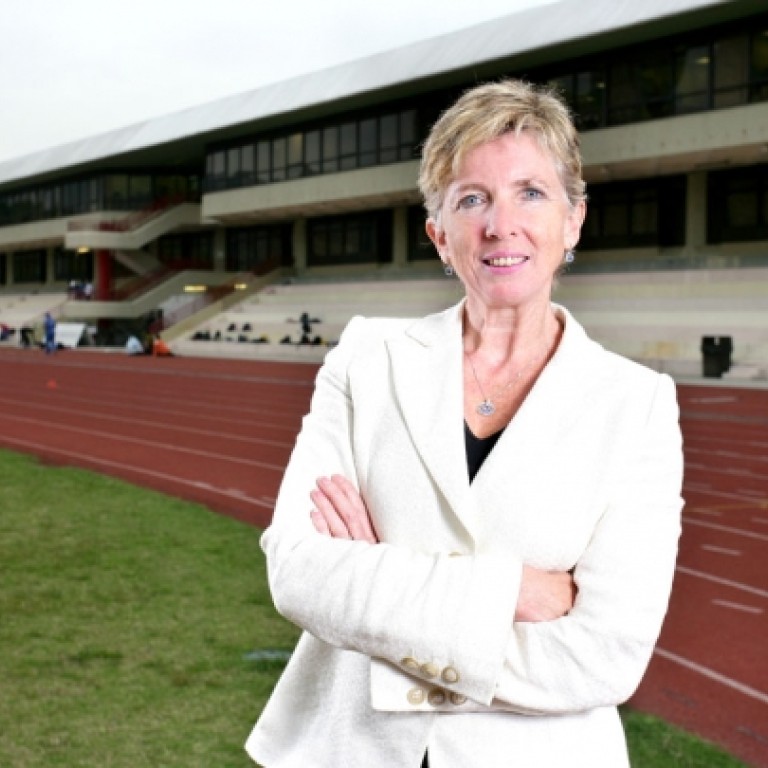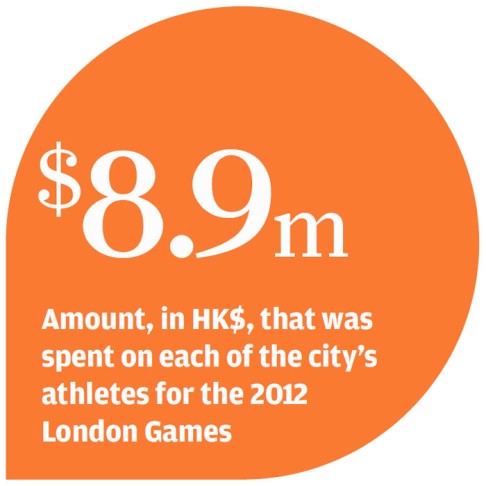
Time to learn the law of large numbers
HK spends as much, if not more, per Olympian as leading countries yet is nowhere in the medals count
The maths is simple. The more numbers you have, the better the chances of success - be it winning the Mark Six or a medal at the Asian Games or, now with standards set higher, even the Olympics.

A lot of countries would die for such a sum spent annually on their elite athletes. And it is set to increase over the next few years thanks to the government's Elite Athletes Development Fund. Set up in 2011 with a one-off grant of HK$7 billion, the money has been invested with the Hong Kong Monetary Authority, and this year saw the return on investments kick in for the first time. The return of more than five per cent is laudable considering the investment took a low-risk and conservative approach.
Yet, HK$325 million is massive considering that two years ago funding was HK$212 million. The money was handed over to the HKSI based on its requirements for the 719 scholarship athletes spread across the 15 elite sports - athletics, badminton, billiards and snooker, cycling, fencing, gymnastics, karate, rowing, squash, swimming, table tennis, tenpin bowling, triathlon, windsurfing and wushu - plus 12 other sports under the Individual Athletes Support Scheme and the two disability sports associations.
The number of athletes will increase soon with rugby sevens, which became an elite sport in April, joining the pack. With newly redeveloped facilities at Fo Tan - the government spent another HK$1.8 billion on that - our athletes have the best environment for nurturing success. This was starkly put into context by figures released by the HKSI revealing that in the lead-up to the 2008 Beijing Olympics, HK$7.4 million was spent on each Olympic athlete in the four-year cycle. This is on par with, if not even better than, what some of the other leading countries spend on their athletes.
For the 2008 Olympic Games cycle, gold-medal topping China spent HK$4.2 million per athlete. The United States HK$7.1 million, Australia HK$7.3 million, Britain HK$9.2 million, Japan HK$9.4 million, Germany HK$7.4 million and South Korea HK$12.8 million. All these countries finished in the top 10 in the overall medal standings, but Hong Kong failed to land a single medal.
For London 2012, Hong Kong's outlay on each Olympian was HK$8.9 million. We returned home with one bronze medal, thanks to cyclist Sarah Lee Wai-sze's efforts in the women's keirin event. While there were a few individual bests, there were no other medals from the 41 athletes in the Hong Kong contingent.
Now with the increased funding, the money spent on each Olympic athlete at the 2016 Rio Olympics is set to rise. Will this be well spent? In the past, just qualifying for the Olympic Games was considered an achievement but the bar is being raised. Medals are needed. And this will only come if the numbers are increased, according to HKSI chief executive Trisha Leahy. She points out that while the institute's comparative study on how much the top-10 countries spend on their athletes puts Hong Kong in the same company, the biggest difference is in the sample size.
China had a record 639 athletes at the Beijing Games, and it translated into winning 100 medals - 51 gold, 21 silver and 28 bronze. Hong Kong had 34 athletes. While larger numbers don't necessarily guarantee success, the odds of landing a medal are increased. And this is what the HKSI is hoping to do. Only 29 per cent of the 719 athletes at the HKSI are full-time. The institute wants this number to increase to 500. This won't happen overnight - the HKSI is hoping for an annual rise of 10 per cent - so hopefully by 2020, we will have a sufficient critical mass in numbers of full-time athletes translating into medals.
Leahy says: "At Asian Games, Hong Kong's gold medals have all been won by full-time athletes, and when looking at all medals, regardless of colour, at multi-sports games, 80 per cent are won by full-time athletes. So just imagine what can happen if 80 per cent of our athletes are full-time rather than the current 29 per cent."
We can only imagine. But time is short. With more money being pumped in, expectations are rising. And these will have to be met sooner rather than later.

